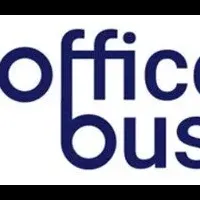
The Commercial and Residential Cleaning Services Market in the US Set for Significant Growth by 2028
Market Overview
The commercial and residential cleaning services sector in the United States is anticipated to undergo remarkable growth, with estimates pointing to an expansion of approximately USD 36.81 billion between 2024 and 2028. This growth trajectory reflects a compound annual growth rate (CAGR) of 6.05%, fueled largely by the rising popularity of multifamily housing units across the nation.
Market Dynamics
The increasing demand for cleaning services comes as property owners and tenants prioritize hygiene and cleanliness in both residential and commercial spaces. The trend towards multifamily dwellings is reshaping living environments, creating fertile ground for cleaning service providers to cater to an expanding clientele. Furthermore, analysts forecast that the number of strategic alliances among cleaning service firms will escalate, enhancing their service capabilities and reach.
However, the market faces challenges, particularly in the realm of labor costs. Variations in labor wages can significantly impact operational efficiency and the overall financial health of service providers. The U.S. Bureau of Labor Statistics has reported a 0.9% increase in wages, with benefit costs rising by 0.7% in 2023, underscoring the financial pressures that cleaning service companies must manage.
Key Players
The competitive landscape is robust, with numerous companies vying for market share. Notable players include:
- - ABM Industries Inc.
- - Anago Cleaning Systems Inc.
- - Angi Inc.
- - Authority Brands
- - Jan Pro Franchising Inc.
- - MaidPro
- - The ServiceMaster Co. LLC
These companies are adapting to market demands by forming strategic partnerships to diversify their service offerings and improve customer experiences. For example, ABM’s recent alliance with the Arizona Diamondbacks exemplifies how firms are innovating to secure contracts through comprehensive service agreements.
Current Trends
The cleaning services market is witnessing a focus on sustainability and eco-friendly practices. Many companies are adopting green cleaning techniques, which not only help protect the environment but also appeal to a growing segment of environmentally conscious consumers. Additionally, the market increasingly emphasizes the use of advanced technologies, like electrostatic spray disinfection and industrial-grade cleaning equipment, to adhere to stringent hygiene standards across different facility types, from healthcare environments to educational institutions.
Customer Expectations
As customer expectations continue to rise, cleaning service providers are prioritizing training and quality assurance. Clients expect not just cleanliness but also reliability and consistency in service delivery. This has prompted many providers to invest in ongoing training for their staff, ensuring that they are equipped to meet the unique cleaning needs of diverse facilities, including cleanrooms, commercial kitchens, and office spaces.
Sector Segmentation
The market is segmented into two primary sectors — commercial and residential:
- - Commercial: This segment encompasses cleaning services for businesses, including healthcare facilities, offices, and hospitality establishments. The ongoing expansion in various sectors, particularly healthcare, is driving increased demand for professional cleaning services.
- - Residential: As more people prioritize their home environments, demand for residential cleaning services has surged. This trend is complemented by an increasing number of households that seek professional cleaning help to maintain their living spaces.
Conclusion
In summary, the commercial and residential cleaning services market in the U.S. is on the cusp of substantial growth. Influenced by changing living trends, the push for hygiene, and the continual evolution of service standards, the market is expected to thrive over the coming years. However, vigilance regarding labor costs and competitive dynamics will be crucial for service providers to navigate this rapidly evolving landscape successfully. For those invested in or exploring this market, staying updated on technological advancements and consumer preferences will be key to unlocking new opportunities and ensuring long-term growth.
Topics Consumer Products & Retail)










【About Using Articles】
You can freely use the title and article content by linking to the page where the article is posted.
※ Images cannot be used.
【About Links】
Links are free to use.